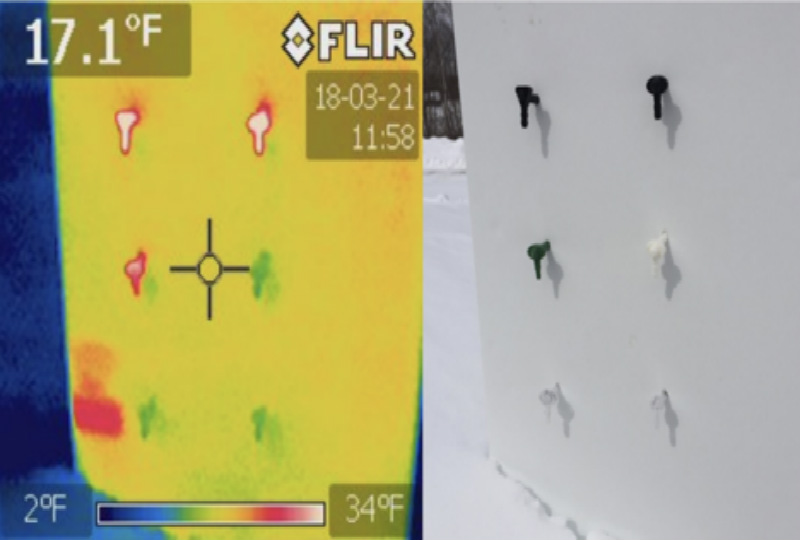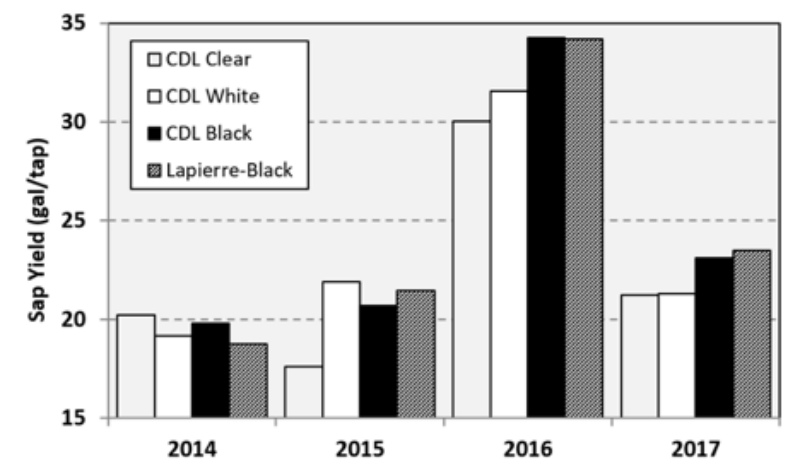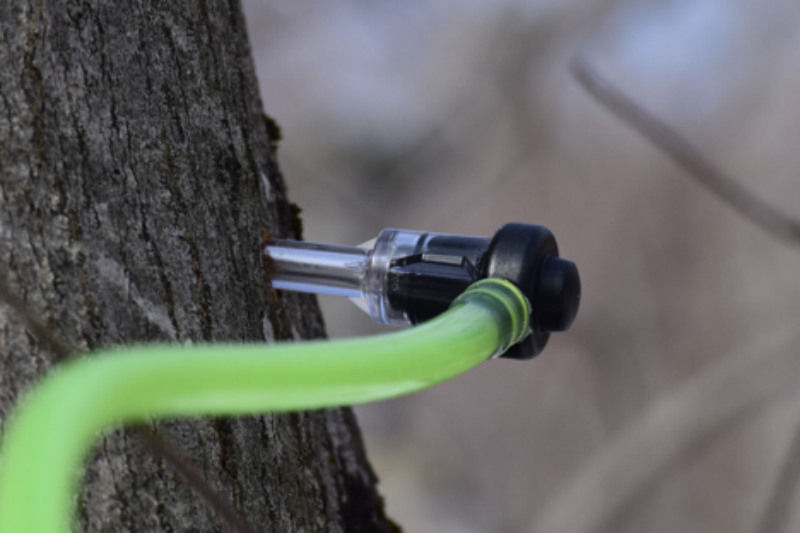Tapping & Tubing
Spout color – Does it matter?
UVM spout study looks at color debate
By DR. TIMOTHY D. PERKINS, ABBY VAN DEN BERG, MARK ISSELHARDT, BRIAN STOWE AND WADE BOSLEY | SEPT. 28, 2018
UNDERHILL CENTER, Vt.—Among the many things that are debated in the maple industry, the effects of spout color on sap yield seem to have as many opinions as there are colors in the rainbow.
Spouts from maple equipment manufacturers are now available in a wide range of colors. Often this selection of color is simply a tool for large-scale producers to keep track of different tappers by assigning them a color, but producers also want to know if spout color has any effect on sap yield.
There has not been a lot of recent research on the subject. Centre Acer conducted a study a few years ago, which concluded that white spouts produced 7% more sap than black spouts (as reported by CDL in their 2018 equipment catalog, page 10).
However, there is likely to be variation from one year to the next depending upon the weather regime experienced during each season. Other factors such as spout design, manufacture, and overall spout/tubing sanitation levels are also likely to slightly affect the results.
In general, it is presumed that any effect of “spout color” on sap yield arises due to thermal warming of darker-colored spouts during sunny periods. Darker-colored spouts warm faster and the spout temperature can rise considerably above air temperature when hit by the sun compared to lighter-colored spouts.
We have measured black spouts heating up by 10°F or more during calm, sunny days in the spring. Such warming might hasten warming and be of benefit early in the day as tubing systems are thawing out or when temperatures are marginal, but at other times warming might result in the acceleration of microbial growth and taphole drying.
Alternatively, clear or white spouts might warm less and suffer from reduced taphole drying late in the season, but might not run as early or as often as darker spouts.
To assess the effect of “spout color” on sap yield, we conducted a multi-year study at the University of Vermont Proctor Maple Research Center in Underhill, Vermont.
Twelve treatment plots were randomly assigned a different spout type, with one mainline and releaser for each plot. CDL 5/16” Maxflow spouts in clear, white, and black, as well as Lapierre Equipment ZML black 5/16” spouts were tested. There were three replicate plots for each spout treatment, with an average of 82 trees per plot (mainline).
Taphole depth was standardized at 1.5” across all treatments. Taphole direction was not a prescribed treatment but given the relatively large numbers of trees in each treatment it was not assumed to favor any one direction. All mainlines were on a common vacuum system that typically operated at 25-26” Hg over each season.
The study was conducted over four seasons from 2014-2017. New spouts were used for each treatment each year, and lines were “dry-cleaned” (spouts pulled with the vacuum on) at the end of each production season.
Droplines were new in 2014. Daily releaser counts were made for each flow day and multiplied by the calibrated amount of sap released per dump, then divided by the number of taps per line to arrive at an average sap yield per season for each type of spout.
In general, spouts produced seasonal total yields that were similar, with only a few gallons difference being observed (Figure 2) between different spout types. None of the differences in sap yield were statistically significant, however, there were some subtle patterns in sap yield that seem to be attributable to spout color, with the results varying depending on the year of study.
Except for the season of 2014, clear polycarbonate spouts tended to underproduce both white and black spouts. Clear spouts are often desired by producers because it is easy to observe sap and bubbles through the spout for leak checking, and because polycarbonate seems to “stick” in the tree better than nylon, thus requiring less attention during the season.
White spouts did about the same as black or clear spouts in 2014, and slightly better than black spouts and modestly better than clear spouts in 2015, yet they underperformed black spouts in 2016 and 2017.
The seasons in 2014-2017 were warm, average, cold and cold respectively. Thus, it appears that black spouts do slightly better in cold seasons, and white spouts slightly better in warmer seasons. Averaging across all seasons, clear spouts produced 22.3 gal/tap, white spouts 23.5 (6.1% increase over clear), and black spouts 24.5 gal (9.7% improvement over clear).
It should be noted that the section of woods used in this research study at UVM PMRC tends to be slightly on the cool side, and both 2016 and 2017 were cooler seasons, perhaps explaining why black spouts did somewhat better in this case. Unfortunately, there is no knowing how any season will play out during tapping, so any spout choice becomes a bit of a gamble.
Practically speaking however, spout color probably has only a modest effect on sap yield except for very extreme years such as that experienced in much of the northeast in 2012, when we had high temperatures in the 70-80°F with sun over several days. Such conditions resulted in severe overheating of black or dark-colored spouts and stopped sap flows quickly.
Given the lack of consistent differences in sap yield due to spout color, there seems to be no compelling reason to choose one color of spout over another. The exception to this is that typically cooler sugarbushes might warrant the use of dark-colored spouts to hasten thawing, while warmer bushes with southern exposures might benefit from the use of light-colored spouts to reduce microbial proliferation due to spout heating.


































